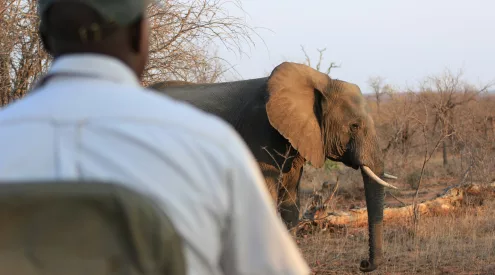Blue whales, the largest animal on earth, migrate annually between feeding and breeding like a host of other species. Researchers at Stanford and the Monterey Bay Aquarium Research Institute (MBARI) have now discovered how certain patterns in the trills and bellows of these animals change when they are preparing to migrate.

An adult blue whale can measure up to 25m metres long.
The study found that blue whales switched from nighttime to daytime singing when starting to migrate from their feeding grounds off the North American coast to their breeding grounds of Central America.
‘We decided to compare daytime and nighttime song patterns from month to month, and there, in the divergence and convergence of two lines, was this beautiful signal that neither of us really expected,’ said John Ryan of MBARI.
The researchers used two advanced recording technologies: an underwater microphone – or hydrophone – and tags that the researchers placed on individual whales. They then monitored the incredible communications between these majestic mammals over several months, noting how it changed nearing their departure.
This new information is especially useful to predict the exact times the whales will begin their journeys so that shipping lanes down the coast can be warned to avoid ship-whale collisions. It will also help experts to better understand how blue whales respond to environmental changes.
Blue whales complete a journey of around 6,400km per year, among the longest in the world.
Listen to a beautiful recording of blue whale songs (unrelated to the study):
Audio credit: Wikimedia Commons
Picture: Twitter/@__895


















